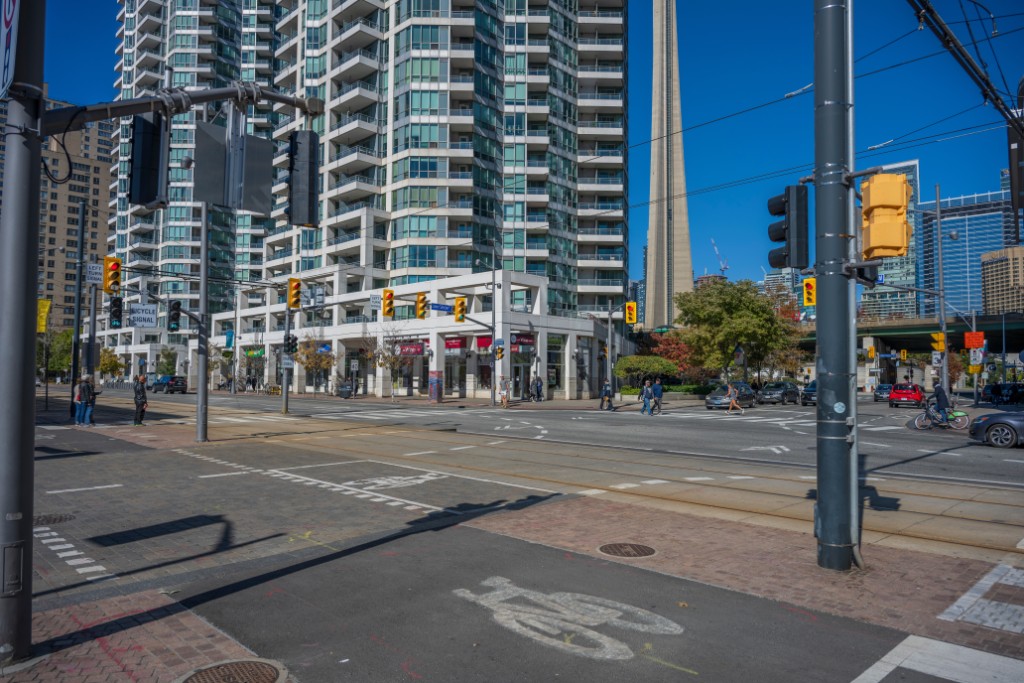June 9, 2023 | bicycle accident Claims
Cycling Accidents in Ontario: What You Should Know
Table of Contents
Cyclists in Ontario must follow the same rules of the road that apply to motor vehicles, as well as other specific requirements laid out by the Highway Traffic Act (“HTA”). Failure to do so could result in charges under the HTA. Moreover, if an accident occurs and a personal injury claim arises, damages could be reduced due to the cyclist’s contributory negligence.
What Is Contributory Negligence?
The test for contributory negligence was summarized by Denning L.J. in Jones v Livox Quarries, [1952] 2 QB 608 (Eng CA), at p. 615:
Just as actionable negligence requires the foreseeability of harm to others, so contributory negligence requires the foreseeability of harm to oneself. A person is guilty of contributory negligence if he ought reasonably to have foreseen that, if he did not act as a reasonable, prudent man, he might be hurt himself; and in his reckonings he must take into account the possibility of others being careless.
Contributory negligence is a finding made by the Court and is expressed as a percentage. Damages awarded will be reduced in accordance with this percentage. For example, if a cyclist is found 10% contributorily negligent for an accident, their damages would be reduced by 10%.
There are many different factors that will be considered in a bicycle accident claim to assess the cyclist’s degree of contributory negligence, if any. This assessment is fact-specific to each case; the totality of the evidence must be examined, and there will always be some level of uncertainty at trial.
Cyclists can take certain actions to maximize their personal safety while riding their bikes and to minimize the possibility of contributory negligence. These actions will be considered by a court when assessing contributory negligence. Every cyclist should be familiar with them before riding a bicycle on any road in Ontario.
Helmets
Although section 104 (2.1) of the HTA requires any person riding a bicycle on a highway (which includes any Ontario roadway intended for use by vehicles) to wear a helmet with a strap securely fastened under the chin, adults aged 18 and over are exempted from this requirement. Children under the age of 17 are not exempt, and it is the responsibility of their guardian to ensure that they wear a helmet while riding.
From a safety perspective, wearing a helmet could mean the difference between life-changing injuries and walking away from a bicycle accident unharmed. From a legal perspective, if a helmetless cyclist sustains injuries that a helmet could have protected against, there will most likely be a finding of contributory negligence and a reduction in damages.
Bicycle Necessities
Although no formal registration or licensing system is in place for bicycles in Ontario, the HTA stipulates some bare minimum requirements for road-worthy bicycles. They are as follows:
- Section 64 (3) of the HTA requires that a bicycle ridden on a highway be equipped with at least one braking system acting on the rear wheel that will enable the rider to make the braked wheel skid on dry, level, and clean pavement.
- Section 75 (5) of the HTA requires that bicycles shall be equipped with an alarm bell, gong, or horn, kept in good working order, to be sounded whenever it is reasonably necessary to notify pedestrians or others of its approach.
- Section 62 (17) of the HTA requires that from one-half hour before sunset and one-half hour after sunrise, a bicycle must display a white or amber light on its front and a red light on its rear. It also requires reflective material to be placed on a bicycle’s front forks and rear. Although not stipulated in the HTA, courts have factored visibility into their analysis, specifically, the wearing of dark clothing when riding at night.
If a cyclist fails to maintain their bicycle in accordance with the HTA or fails to ensure adequate visibility, there could be a finding of contributory negligence and a reduction in damages.
Road Protocol
Cyclists must know the rules of the road and abide by them. They must obey traffic signals and signage, signal their intended movements, and yield the right of way to other road users and pedestrians as required.
Section 142 of the HTA outlines signalling requirements for cyclists. Cyclists must signal turns to the left or right. They must also signal when moving from a parked position into a moving traffic lane before setting their bicycles in motion. These signals must be made in the following manner:
- To the left: by extending the hand and arm horizontally and beyond the left side of the vehicle.
- To the right: by extending the hand and arm upward and beyond the left side of the vehicle, or by extending the right hand and arm horizontally and beyond the right side of the bicycle.
Section 147 of the HTA requires that any vehicle under the normal speed of traffic (including bicycles) shall, where practicable, be driven in the right-hand lane or as close as practicable to the right-hand curb edge of the roadway.
Despite common practice, riding a bicycle through a crosswalk is prohibited by the HTA (unless the intersection is controlled by a traffic control signal system). Riding a bicycle on the sidewalk is prohibited by most Ontario municipalities. When traversing these areas, cyclists should dismount and walk their bicycles.
Other users of the road should be able to reasonably anticipate where cyclists could be riding and should be able to readily identify any intended changes to their paths of travel. If an accident occurs when a cyclist is riding in a prohibited or unexpected area or while they are performing a maneuver without signalling their intention, there could be a finding of contributory negligence and a reduction in damages.
Case Law
The above requirements can be onerous, and many of these requirements are likely unknown to most cyclists on Ontario roads. So, what will be the effect of imperfect compliance with one (or many) of these requirements? The reality is that no two cases are exactly alike, so the range of contributory negligence findings varies quite substantially:
In Repic v. Hamilton (City), 2009 CanLII 60673 (ON SC), the plaintiff was 14 years old and had not yet been formally trained on the rules of the road. He failed to stop his bicycle before entering an exit ramp. It was nighttime. His bicycle did not have any lights, he was wearing dark clothing, and he failed to look properly for oncoming traffic before proceeding. Had he looked properly, he would not have proceeded and could have avoided the accident. He was found to be 45% contributorily negligent.
In Pelletier v. Ontario, 2013 ONSC 6898 (CanLII), the Plaintiff had no helmet, was wearing dark clothing at night, and rode his bike out of a parking lot into a crosswalk. He was found to be 40% contributorily negligent.
In Niitamo v. Insurance Corp. of British Columbia, [2003] B.C.J. No. 913, the Plaintiff was not wearing a helmet and was hit while making a sudden right-hand turn through a pedestrian crosswalk. He was found to be 15% contributorily negligent.
It should be noted that failure to wear a helmet will not, in and of itself, be sufficient to make a finding of contributory negligence. In St. Marthe v. O’Connor, 2019 ONSC 1585 (CanLII), the Plaintiff was not wearing a helmet. However, since the court found no causal link between the lack of a helmet and his injuries (which were unrelated to the head), no contributory negligence was found.
The success of your case depends on the facts and certain choices you make while riding. Prioritizing your own safety while riding a bike and obeying the rules of the road could benefit your physical well-being and protect your rights to fair compensation in the event of an accident.
This article was written by David Bradshaw.
Written by David Bradshaw
Personal Injury Lawyer
Lawyer David Bradshaw has experience handling a wide range of injury litigation, including complex brain and psychiatric injuries, motor vehicle accidents, slip and falls, long-term disability benefit denials, and more.
Blog Categories
More bicycle accident Topics
Here’s more information on bicycle accident related topics that we think you might find helpful.

bicycle accident
|
January 11, 2023
Toronto’s Most Dangerous Intersections for Accidents
Over the last few years, as pandemic restrictions in Toronto have eased and the pace of life began returning to normal, residents of the city…

bicycle accident
|
March 5, 2021
Safety Tips for Winter Cycling
On Friday, February 12th, cycling enthusiasts all over the world celebrated International Winter Bike to Work Day 2021 by taking their bicycles for a spin…

accident benefits
|
July 31, 2018
Sports Injuries in Ontario: What Are My Rights?
During 2016 and 2017, nearly 18,000 Canadians were hospitalized after suffering a sports injury, according to the Canadian Institute for Health Information (CIHI). Because of…
